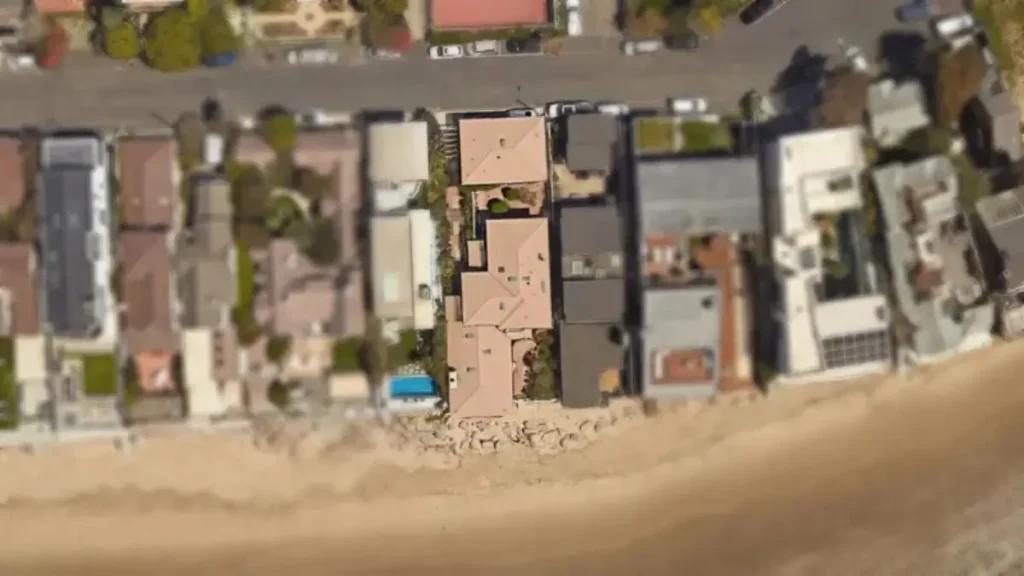Former Google CEO Eric Schmidt’s $500 Million Property Portfolio Spans the Globe
If you had $500 million to spend on property, how would you use it?
I’ve thought about that too. Would I go for a beachfront mansion in Malibu? A penthouse in New York? Maybe something old and full of history—someplace quiet, where no one can find me.
That’s exactly the kind of real estate game Eric Schmidt plays. But way more strategically than most people realize.
While everyone was watching his moves at Google, he was quietly building one of the most impressive—and private—property empires in the tech world. We’re talking over $500 million worth of homes. But not just any homes. Think: French chateaus, historic estates with geothermal systems, ultra-private compounds you’d never spot on a map.
And what fascinates me isn’t just what he bought—but why.
He’s not out here flipping condos or buying hype houses. His choices say something deeper. They’re about legacy, privacy, and power—not just prestige.
As I walk you through Schmidt’s real estate portfolio, I’ll show you how these properties connect to the way billionaires think. And if you’re someone who loves real estate, or just wants a peek into how serious wealth moves—you’re going to want to see this.
But first, let me ask you—if you had access to the kind of capital Schmidt has, would you build a legacy or just a lifestyle?
Overview of Eric Schmidt’s Property Empire
You’ve probably read headlines like “quietly amassed more than $500 million worth of real estate”—I know I did when I came across Robb Report. But what does that actually mean?
I dug into public records and media reports, and here’s what matters: Schmidt isn’t just hoarding luxury homes. He’s building a diversified, global real estate portfolio that spans coasts and continents.
Right now, his empire includes:
- Historic mansions in Hudson Valley with eco-friendly retrofits,
- French-designed estates in California,
- A massive Atherton compound,
- A London Grade‑II Victorian mansion,
- Plus properties in New York City and Nantucket.
This isn’t a random collection—it’s a deliberate strategy blending lifestyle, legacy, and long-term value. I want you to see these properties not as flashy assets, but as chapters in a carefully crafted story of wealth that goes beyond a simple billionaire real estate pinch.
These kinds of heritage estates are rare—and remind me of other media icons’ homes hitting the market, like Willard Scott’s Virginia estate listed recently with its own story and character.
Major Property Hubs & Key Assets
If you really want to understand how Eric Schmidt thinks about real estate, don’t just look at the price tags—look at the properties. Every one of them tells a story. Here’s the breakdown, region by region.
Atherton, Silicon Valley — Where It All Began
Schmidt’s real estate journey started with a quiet but powerful move. Back in the early ’90s, he bought a 3.3-acre compound in Atherton, one of the most expensive zip codes in the U.S.
Over the years, he expanded and refined it into a secluded, tree-shielded estate with multiple structures. In 2023, he sold it for around $22.5–24.5 million—a major return on his original ~$2M investment.
This wasn’t a “just-live-here” buy. It was a headquarters for privacy, meetings, and long-term positioning right in Silicon Valley’s heart.
Montecito & Malibu, California — Luxury Meets Lifestyle

Now here’s where things get cinematic.
In Montecito, Schmidt owns a grand, French chateau-style estate nestled in the hills. He bought it in 2007 for nearly $20 million. This estate isn’t just a retreat—it’s been used to host private events and high-profile gatherings.
Malibu is his oceanfront escape. Though details are limited (Schmidt keeps it low-key), sources confirm he holds property in the ultra-exclusive Malibu Colony—a hotspot for media moguls and Hollywood A-listers.
For you and me, these homes aren’t just homes. They’re a reminder that real wealth is about access—to nature, to privacy, and to power circles.
Malibu, of course, has been a hotspot for stars—David Duchovny recently sold his beachfront property for $11 million—which just adds to the appeal of Schmidt owning a quiet piece there.
Holmby Hills, Los Angeles — Classic Power Real Estate
This one feels like a movie set.
In 2014, Schmidt bought a stunning French-style chateau in Holmby Hills—one of L.A.’s most elite neighborhoods. It’s near the Playboy Mansion, which says enough about the neighborhood’s old-money charm.
The mansion spans over 9,000 square feet and carries that grand, Versailles-like aesthetic. Stone facades, tall hedges, ornate interiors—it’s the kind of place that whispers rather than shouts.
This isn’t a party house. It’s a signal of status. And if you’re thinking long-term, owning in Holmby is like having a Picasso in your portfolio.
New York City & Nantucket — Urban Edge + Coastal Calm
Schmidt doesn’t just stay coastal—he goes bicoastal.
In NYC, he owns a sleek Flatiron District penthouse—6,250 square feet of floor-to-ceiling windows, high ceilings, and views for days. Bought around 2013 for nearly $15 million, it’s the kind of urban command center you’d expect from a tech titan.
On the flip side? His Nantucket estate, which he’s held since the late ’90s. This one’s all about quiet luxury—whale-watching, cobblestone streets, and zero paparazzi.
Together, these two properties show you something important: balance. Work hard in the city. Disappear by the sea.
Astor Courts, Hudson Valley — Where History Meets Sustainability
This might be his most fascinating move.
In 2016, Schmidt bought Astor Courts, a Gilded Age 40,000-square-foot mansion on the banks of the Hudson River. Designed in 1904 for John Jacob Astor IV, it once hosted lavish parties for America’s elite.
But here’s the twist—Schmidt modernized it with geothermal heating, turning it into a quiet sustainability marvel. Preserving history while upgrading its future? That’s long-game thinking.
For someone who built his name in technology, it’s poetic—restoring the past while preparing it for what’s next.
London, UK — The International Power Play
In 2025, Schmidt made headlines by buying a £42 million ($53M) Grade-II listed mansion in Holland Park—London’s version of Beverly Hills.
What makes this one stand out? It’s likely a strategic foothold in Europe. Whether it’s used personally or rented out, this buy adds serious global weight to his portfolio.
And let’s be real—you don’t buy a restored Victorian estate in Holland Park unless you’re playing for legacy.
Like Todd Nepola’s pivot to a Miami high-rise after a personal reset, Schmidt’s London move feels strategic—a blend of new chapter and global positioning.
Investment Strategy & Portfolio Patterns
When I look at Schmidt’s portfolio, I don’t just see homes—I see a pattern. And if you’re paying attention, you’ll notice it too.
He’s not buying based on trends or flipping for profit. He’s focused on long-term appreciation, privacy, and legacy value.
You’ll find:
- Ultra-prime ZIP codes (Atherton, Holmby Hills, Flatiron NYC)
- Geographically spread assets — coasts, countryside, and now international
- Sustainable upgrades like geothermal systems (rare for billionaires, by the way)
- Historic and architecturally unique estates, not cookie-cutter mansions
And he’s patient. That Atherton compound? He held it for decades. Astor Courts? Historic, remote, and probably not for sale anytime soon.
If you ever plan to build serious wealth through real estate, this mindset—slow, strategic, legacy-first—might be your most important takeaway.
Timeline of Key Real Estate Moves

Let’s break it down year-by-year so you can actually see how Schmidt built this empire over time—not overnight.
- 1990s – Buys original Atherton compound (~$2M)
- 1999 – Acquires Nantucket vacation home
- 2007 – Purchases Montecito French chateau (~$20M)
- 2013 – NYC Flatiron penthouse (~$15M)
- 2014 – Buys Holmby Hills French-style mansion
- 2016 – Acquires Astor Courts, Hudson Valley (~40,000 sq ft)
- 2023 – Sells Atherton compound for ~$22.5M+
- 2025 – Buys £42M London mansion in Holland Park
Each of these wasn’t random—it fits into a larger puzzle. That’s how long-term real estate empires are actually built: with discipline, timing, and vision.
Think about your own strategy. Are you chasing quick wins—or playing the long game?
Sustainability & Preservation in the Portfolio
This is one part of Schmidt’s empire that honestly surprised me—and it might surprise you too.
At Astor Courts, he installed geothermal heating and cooling, a move that’s rare even among eco-conscious millionaires, let alone billionaires.
This tells me something deeper: he’s not just buying for aesthetics or history—he’s thinking about longevity.
Preservation is a theme across multiple properties:
- Astor Courts wasn’t torn down. It was restored.
- His Montecito estate maintains old European design.
- The London mansion? Grade-II listed—which legally protects its heritage.
In a world where most luxury homes are bulldozed and rebuilt, this mindset is rare.
If you care about the future of real estate—about sustainability, cultural value, and long-term thinking—this part of Schmidt’s story is worth watching.
I actually came across a few off-the-radar restoration projects while researching this—shared in a private real estate update group I follow on WhatsApp. They’re not always in the headlines, but some of the smartest preservation plays show up there first. Worth keeping an eye on those kinds of feeds if you’re into long-term real estate strategy.
Final Thoughts
You and I both know—owning homes is one thing. But building a real estate empire that spans decades, continents, and legacy properties? That’s a different game.
What I see in Schmidt’s portfolio is this:
He isn’t trying to impress anyone. He’s securing influence, privacy, and permanence.
There’s no fluff here. These are homes that can outlive trends, hold value during downturns, and carry weight beyond dollar signs. He’s buying history, not just houses. And he’s setting up a real estate legacy that says, “I was here—and I built with purpose.”
If you’re someone who dreams big—whether it’s in business or real estate—there’s something here for you too. Wealth isn’t just about what you can afford. It’s about what you choose to hold on to.
If you enjoy tracking how high-profile names buy and sell unique homes, you might also like other stories on our website.
Disclaimer: All property information in this article is based on publicly available sources, trusted media reports, and verified property sale data as of 2023–2025.


